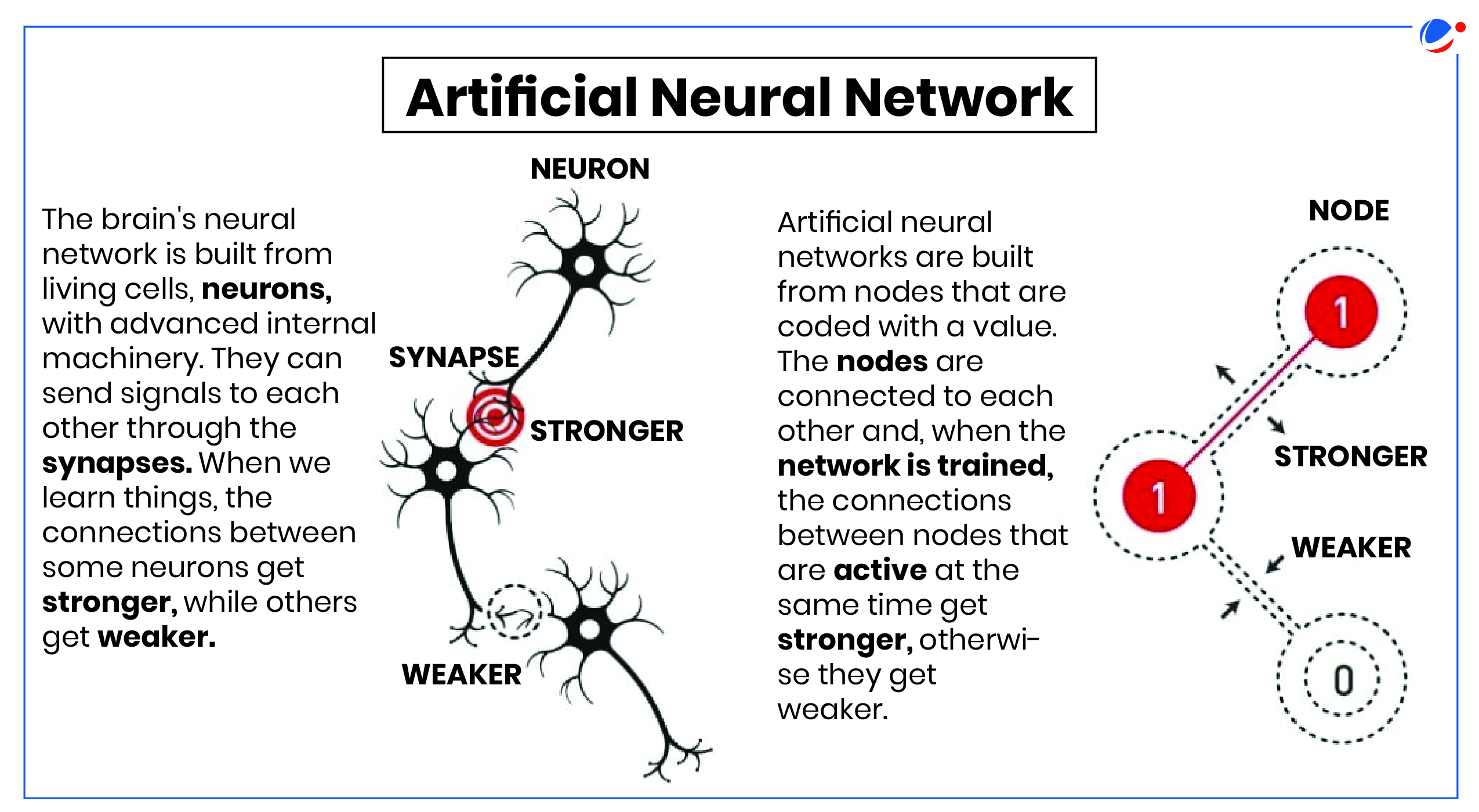Why in the News?
Nobel Prize in Physics 2024 has been awarded to John J. Hopfield and Geoffrey Hinton for foundational discoveries and inventions that enable Machine Learning (ML) with Artificial Neural Networks (ANNs).
Discoveries that were awarded Nobel Prize
- John Hopfield invented Hopfield network, a type of recurrent neural network that can store and reconstruct information.
- These networks work like a memory system, where they can store patterns (like images) and retrieve them.
- Network relies on Donald Hebb's hypothesis - when neurons act together, they can enhance network's capability to process and store information.
- Hopfield networks can be used for tasks like image recognition and data reconstruction, making them valuable for various applications in machine learning.
- Geoffrey Hinton invented a method (Boltzmann machine) that can independently discover properties in data and has become important for large ANNs now in use.
- Boltzmann Machine is an early example of a generative model, which can create new patterns or examples based on what it has learned.
- A trained Boltzmann machine can recognise familiar traits in information it has not previously seen.
- Boltzmann Machine is an early example of a generative model, which can create new patterns or examples based on what it has learned.
Artificial Neural Networks (ANNs)
- Definition: ANN is a ML program or model that makes decisions in a manner similar to the human brain, by using processes that mimic the way biological neurons work together to identify phenomena, weigh options and arrive at conclusions.
- Working: Human brain is the inspiration behind neural network architecture.
- Human brain cells, called neurons, form a complex, highly interconnected network and send electrical signals to each other to help humans process information.
- Similarly, an ANN is made of artificial neurons or nodes that work together to solve a problem.

- ANN Structure: Basically, every neural network consists of layers of artificial neurons interconnected in three layers:
- Input Layer: Process the data, analyze or categorize it, and pass it on to the next layer.
- Hidden Layer: Analyzes output from input layer, processes it further, and passes it on to next layer.
- ANNs can have a large number of hidden layers with each layer.
- Output Layer: It gives final result of all data processed by ANN.
- Major types of ANN:
- Deep Neural Networks: These are neural networks with many layers, each building on the previous layer to refine and optimize the prediction or categorization.
- Convolutional Neural Networks (CNNs): Used primarily in computer vision and image classification applications.
- They can detect features and patterns within images and videos, enabling tasks such as object detection, image recognition, pattern recognition and face recognition.
- Recurrent Neural Networks (RNNs): Typically used in natural language and speech recognition applications as they use sequential or time-series data.
- Use-cases include stock market predictions, image captioning, natural language processing etc.
- Generative Adversarial Networks (GANs): Used to create new data resembling the original training data.
- These can include images appearing to be human faces—but are generated, not taken of real people.
Machine Learning
|




